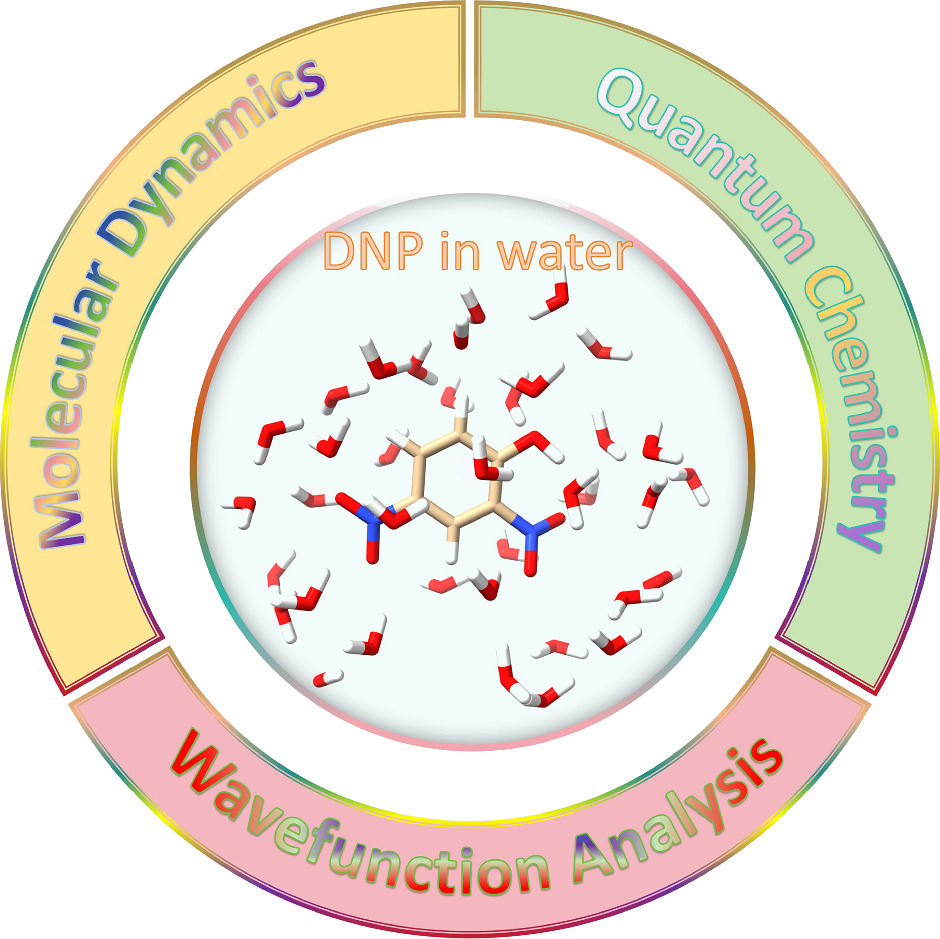https://doi.org/10.1140/epjp/s13360-025-06478-8
Regular Article
Intermolecular interaction mechanisms between dinitrophenol and water: a molecular dynamics and DFT study
1
School of Physics and Electronics, Shandong Normal University, 250358, Jinan, Shandong, China
2
College of Mechanical and Electronic Engineering, China University of Petroleum, 266580, Qingdao, Shandong, China
Received:
15
November
2024
Accepted:
24
May
2025
Published online:
14
June
2025
2,4-Dinitrophenol (DNP) is widely used in various areas within chemical industry. Due to its properties as a carcinogen and mutagen, it is classified as high-risk chemical that affects both aquatic and terrestrial organisms, presenting risks of poisoning and harm to human health. Studying the characteristics of DNP in water is significative for pollution treatment and environmental purification. In this study, we exhibited dynamic and static features of intermolecular interactions of DNP in water, providing a reference for theoretical researchers in simulation processes and offering novel perspectives for experimentalists. The molecular dynamics results indicate that high temperatures can disrupt the hydrogen bonds between DNP and water, reducing the stability of the microstructure and resulting in a relatively looser cluster structure of DNPs. First-principle calculations reveal that the local polarity differences generated by the nitro and hydroxyl functional groups on DNP lead to localized variations in the distribution of hydrogen bonds formed with different numbers of water molecules, with nitro groups adjoining to hydroxyl groups exhibiting higher polarization. The changes in infrared vibrational spectra with varying numbers of water molecules also show differences compared to the vibrational characteristics of pure water hydrogen bond network.
Supplementary Information The online version contains supplementary material available at https://doi.org/10.1140/epjp/s13360-025-06478-8.
Copyright comment Springer Nature or its licensor (e.g. a society or other partner) holds exclusive rights to this article under a publishing agreement with the author(s) or other rightsholder(s); author self-archiving of the accepted manuscript version of this article is solely governed by the terms of such publishing agreement and applicable law.
© The Author(s), under exclusive licence to Società Italiana di Fisica and Springer-Verlag GmbH Germany, part of Springer Nature 2025
Springer Nature or its licensor (e.g. a society or other partner) holds exclusive rights to this article under a publishing agreement with the author(s) or other rightsholder(s); author self-archiving of the accepted manuscript version of this article is solely governed by the terms of such publishing agreement and applicable law.






